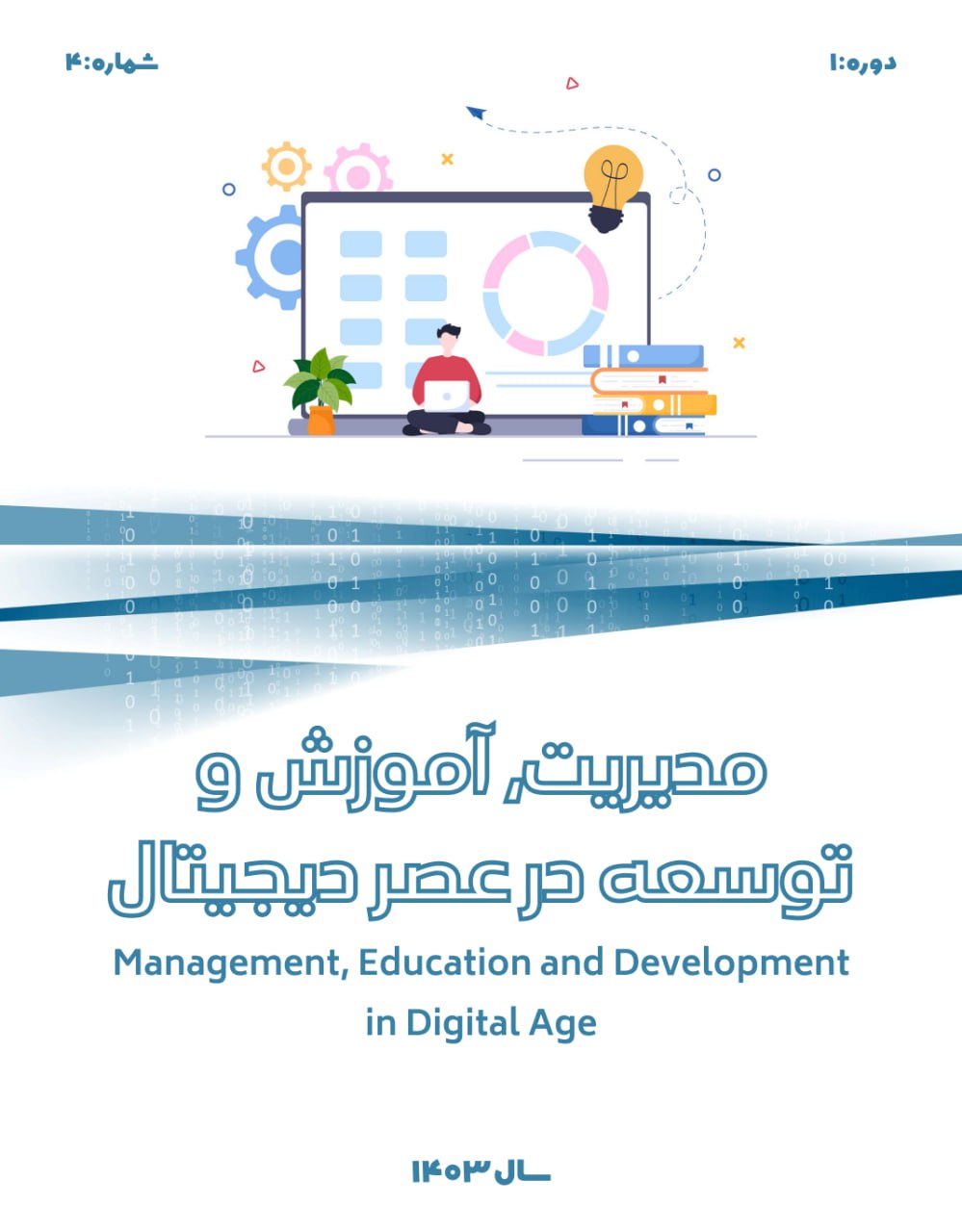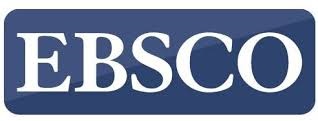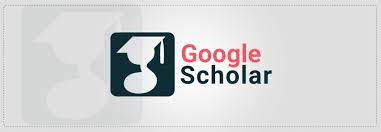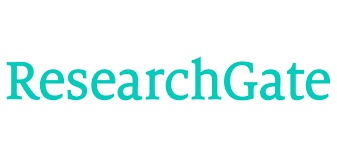Modeling a Multi-Skilled School with a Strategic Agility Approach in Lower Secondary Education
Keywords:
Multi-skills school, strategic agility, unior high schoolAbstract
The aim of this study was to model a multi-skilled school based on a strategic agility approach in lower secondary education. This exploratory mixed-methods study was conducted in three phases: qualitative modeling, expert validation, and quantitative testing. In the qualitative phase, grounded theory and semi-structured interviews with 19 educational experts were used to identify key components. The second phase employed a three-round Delphi method with 22 experts for model validation. In the quantitative phase, a cluster sample of 342 out of 3,096 teachers from Golestan Province was selected using Cochran’s formula. A 104-item researcher-made questionnaire was administered. Data were analyzed using SPSS and Smart PLS software. The qualitative findings led to the identification of 11 main categories and 25 subcomponents across causal, contextual, intervening, strategic, and consequential conditions. Quantitative analysis confirmed the reliability and validity of all components based on confirmatory factor analysis, discriminant and convergent validity, and composite reliability. The final structural model demonstrated a high level of goodness-of-fit and included 104 validated indicators. The results suggest that implementing a multi-skilled school model with strategic agility at its core can effectively prepare adaptive, empowered, and market-responsive human capital. The success of such a model relies on systemic design, resource support, institutional collaboration, interdisciplinary curricula, and continuous evaluation.
Downloads
References
Abbasi, H., & Fattahian, N. (2017). The effect of strategic learning on organizational performance with the mediating role of strategic agility (Case study: Sports and Youth Departments of Hamadan and Kermanshah Provinces). Contemporary Research in Sports Management, 8(15), 29-43. https://smms.basu.ac.ir/article_2442_en.html
Armanmani, S., & Shafiei, A. (2017). Competitive capabilities in knowledge-based companies: A model for explaining the role of strategic agility and strategic learning. Improvement and Transformation, 25(83), 25-50. https://jmsd.atu.ac.ir/article_7477_en.html
Baei, S., Kordnaiej, A., & Delkhah, J. (2016). Strategic agility in Iran's banking industry and its impact on efficiency. Business Strategies, Shahed University Biannual Journal, 23(8), 43-58. https://cs.shahed.ac.ir/article_2336.html?lang=en
Bavarsad, B., Neys, A. H., & Darabian, P. (2018). The effect of strategic agility on operational responsiveness and organizational performance. Strategic Management Studies, 9(36), 65-83. https://www.smsjournal.ir/article_87693_en.html
Chan, J. I. L., & Muthuveloo, R. (2021). Antecedents and influence of strategic agility on organizational performance of private higher education institutions in Malaysia. Studies in Higher Education, 46(8), 1726-1739. https://doi.org/10.1080/03075079.2019.1703131
Ferraris, A., Degbey, W. Y., Singh, S. K., Bresciani, S., Castellano, S., Fiano, F., & Couturier, J. (2022). Microfoundations of Strategic Agility in Emerging Markets: Empirical Evidence of Italian MNEs in India. Journal of World Business, 57(2), 101272. https://doi.org/10.1016/j.jwb.2021.101272
Ghobadi, P., Sabounchi, R., & Foroughipour, H. (2020). The mediating role of human capital in the effect of strategic agility on the creativity of employees of the Iran Gymnastics Federation. New Approaches in Sports Management, 8(29), 105-116. https://ntsmj.issma.ir/article-1-1279-fa.html
Ghorbanian, P., & Maleki, S. (2019). Internship: A path for training multi-skilled teachers in the education of students with special needs Ahvaz. https://elmnet.ir/article/21061764-35118/ https://elmnet.ir/article/21061764-35118/
Hamidi Amani, H. (2019). Designing human resource strategies in Jahad Daneshgah Public Administration, Human Resource Development]. https://www.sid.ir/fileserver/je/51021920210410.pdf
Hejazi, A., & Saei Mehraban, R. (2017). Establishing and developing skill-training schools. Work and Society, 2017(213), 61-73. https://www.noormags.ir/view/fa/articlepage/1476575/
Jamshidi, H., Faghihi, A., & Yousefzadeh, M. R. (2021). Extracting the characteristics of essential elements of the skill-training curriculum for second-grade high school students. Research in Curriculum Planning, 1400(68), 73-85. https://www.sid.ir/paper/383902/fa
Kasamani, G. I., Changeiywo, N. C., & Karim, H. (2024). Strategic Agility in Dynamic Markets: Leveraging Innovation for Competitive Advantage. International Journal of Social Science and Humanities Research (Ijsshr) Issn 2959-7056 (O) 2959-7048 (P), 2(3), 404-410. https://doi.org/10.61108/ijsshr.v2i3.150
Kavoosi, E., & Hosseini Rad, S. M. (2017). Presenting a model for developing skill training in organizations. 5(3, Consecutive No. 19), 40-61. https://drkhaleqi.com/wp-content/uploads/2022/08/
Khorasani, A., Nourallahi, M., Mehri, D., Naghshbandi, H., & Namdar, H. (2015). Identifying factors effective on training transfer to the workplace at Shahid Sattari Air University. Scientific Quarterly of Human Resource Studies, 5(1), 147-162. https://civilica.com/doc/542207/
Kumkale, İ. (2016). Organization's tool for creating competitive advantage: Strategic agility. Balkan and Near Eastern Journal of Social Sciences, 2(3), 118-124. http://www.ibaness.org/bnejss/2016_02_03/015_kumkale_new.pdf
Lotfi Jalalabad, M., Farhadi, A., Ravaei, S., & Gholami, M. (2019). Designing a skill-based model for technical and vocational students using Grounded Theory. Karafan Scientific Quarterly, 16(2), 71-100. https://karafan.nus.ac.ir/article_105314.html
Marlapa, E., Karyatun, S., Yuliantini, T., Pradopo, L. R., & Endri, E. (2024). Determinants of Sustainable Performance: The Mediating Role of Strategic Agility and the Moderating Role of Leadership. Uncertain Supply Chain Management, 12(4), 2253-2262. https://doi.org/10.5267/j.uscm.2024.6.006
Medeshova, A., Amanturlina, G., & Sumyanova, E. (2016). Development of Training Skills in Students as the Precondition for Educational Competencies. International Journal of Environmental & Science Education, 11(17), 9649-9656. https://files.eric.ed.gov/fulltext/EJ1119053.pdf
Mohammadkarimi, P., Seyed Naghavi, M. A., & Salavati, A. (2020). Identifying the dimensions, components, and indicators of strategic agility in Bank Melli Iran. Strategic Management Research, 26(78), 37-72. https://smr.journals.iau.ir/article_679969.html?lang=en
Moradi Dehaghi, S. (2019). Identifying and formulating student skill-training strategies based on Islamic-Iranian culture. Work and Society, 2019(231), 4-25. https://www.noormags.ir/view/en/articlepage/1575289/
Naseri Alashti, M., Hashemnejad Abrasi, F., & Saffarian Hamedani, S. (2020). A localized model for branding individual and social skill-training and entrepreneurship in Iranian schools. School Management, 8(3), 67-94. https://www.sid.ir/paper/958131/fa
Salehizadeh, M., Hasani, B., Eskandari Nasab Siahkouhi, A., & Lari Ja'fariabadi, F. (2023). The necessity of training multi-skilled teachers in the education system Bandar Abbas.
Smith, J., & Brown, R. (2023). Innovative Educational Models: A Guide to Multiskilled Schools. Journal of Educational Development, 12(3), 45-62. https://doi.org/10.1016/j.jed.2023.07.004
Tarba, S. Y., Frynas, J. G., Liu, Y., Wood, G., Sarala, R. M., & Fainshmidt, S. (2023). Strategic agility in international business. Journal of World Business, 58(2), 101411. https://doi.org/10.1016/j.jwb.2022.101411
Tenggono, E., Soetjipto, B. W., & Sudhartio, L. (2025). Dynamic Managerial Capabilities In action: Advancing Strategic Agility and Digital Readiness in Healthcare Organizations. Journal of Organizational Change Management. https://doi.org/10.1108/jocm-12-2024-0772
Veisi, K., Kouzechian, H., Ehsani, M., & Keshtidar, M. (2016). Presenting a model of the effect of organizational agility on organizational performance in sports manufacturing companies. Sports Management Studies, 8(39), 17-36. https://smrj.ssrc.ac.ir/article_888.html
Downloads
Published
Submitted
Revised
Accepted
Issue
Section
License
Copyright (c) 2025 فریناز بذرافشان (نویسنده); کامبیز اسماعیل نیاء شیروانی; طیبه تجری, مریم صفری (نویسنده)

This work is licensed under a Creative Commons Attribution-NonCommercial 4.0 International License.








